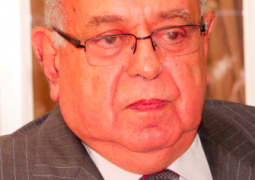She was speaking during the validation workshop of the environmental and social management plan, ESMP, for the EU Millennium Development Goal 1c Project, which was conducted by the National Environment Agency in collaboration with FAO and held at the Kairaba Beach Hotel.
According to Mrs Njie, the World Food Summit in 1996 adopted strategies and a framework, the first goal of which was to ensure access to all and sufficient, nutritionally-adequate and safe food, that is, food security.
This was to ensure that the number of undernourished people is reduce to half by 2015, she said.
In the same vein, she added, world leaders adopted a similar goal at the Millennium Summit target 2 to eradicate extreme poverty and hunger and, to this end, FAO adopted a corporate strategy on reducing food insecurity and rural poverty.
She said according to the comprehensive food security and vulnerability analysis (CFSVA, 2011), 11 percent of the world’s population is considered food insecure or vulnerable to food insecurity.
Despite the global contribution and the recent gains that have pushed the figure below 1 billion, FAO estimates that the number of people who suffered chronic hunger in 2010 was 925 million.
She further stated that in The Gambia, food insecurity and poverty have a marked geographic dimension in the country.
The recent DHS report shows that there is a higher proportion of poor, food insecureor vulnerable population found in several districts of CRR (North and South ), Lower River Region, North Bank Region and Upper River Region.
She said poor households have limited access to food, and domestic productivity is constrained by a highly seasonal and mostly rain-fed subsistence agriculture.
She noted that in order to address some of the challenges and constraints of Gambian agriculture, the MDG1c project was formulated with the aim of enhancing the productivity of food systems and tackle both the supply side (source of micro nutrients more widely available) and the demand side (increase household income) of hunger.
In line with the organization’s strategies to foster sustainable natural resources and development, FAO found it prudent to engage the services of the National Environment Agency to carry out a social and environmental impact assessment, and develop an Environmental Social Management Plan (ESMP) for the project, she said.
The permanent secretary Ministry of Environment, Climate Change and Wildlife, Ousman Sowe, stated that the importance of this objective, as it related to improve nutrition for children, could not be underestimated, because is established that there is a strong correlation between nutrition and performance in school-going children.
They are aware of the dramatic change that continues to take place on the environment largely due to human activities, he further stated, adding that the resulting decline in economic gain due to late and short rains is already well-known.
According to him, the Gambia government is aware of the need to streamline sustainable environmental consideration in its development plan and to undertake conscious efforts in this regard, when responding to the challenges of population growth, poverty reduction, increase water sanitation, food security and improve health, among others.
Read Other Articles In Article (Archive)
British national convicted for being in possession of firearm
Dec 13, 2013, 10:22 AM



